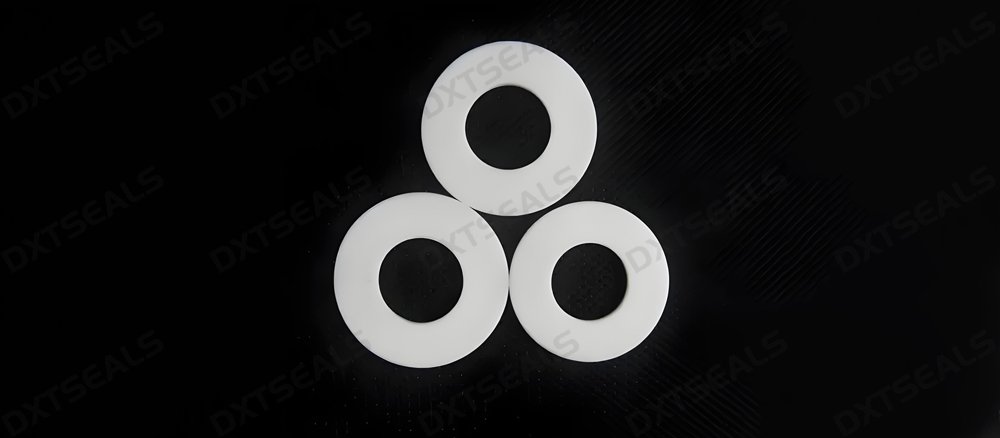
When it comes to sealing solutions in demanding industrial environments, few materials offer the versatility and reliability of PTFE-based seals (also known as PTFE composite seals or PTFE V-packings). However, choosing the right PTFE material formulation is not one-size-fits-all. The correct seal material depends heavily on operating conditions like temperature, pressure, speed, and chemical exposure.
In this article, we share practical advice on selecting the most suitable PTFE seal material for your specific application—so your systems perform reliably and efficiently.
🔍 Why PTFE Is a Preferred Seal Material
Polytetrafluoroethylene (PTFE) is known for:
-
✅ Excellent chemical resistance
-
✅ Wide temperature tolerance (up to 260°C)
-
✅ Low friction and excellent dry-running capabilities
-
✅ Non-stick and anti-aging properties
These features make PTFE seals ideal for applications in oil & gas, hydraulics, food processing, semiconductors, and aerospace.
🛠 Key Factors to Consider When Selecting PTFE Seals
1. Operating Temperature
PTFE alone can withstand high temperatures up to 260°C, but certain fillers improve heat resistance and thermal conductivity. If your system operates in:
-
Extreme heat → Choose PTFE + Graphite or PTFE + Bronze
-
Cryogenic conditions → Use pure PTFE or PTFE + glass fiber
2. Pressure Levels
For high-pressure sealing (e.g., in hydraulic cylinders), reinforced materials offer better structural stability.
-
Medium pressure → PTFE + Glass Fiber
-
High pressure → PTFE + Bronze or PTFE + Carbon
-
Ultra-high pressure → Multi-component seals like Spring-energized PTFE seals
3. Chemical Compatibility
When exposed to acids, bases, or aggressive solvents:
-
Use virgin PTFE or PTFE + silica
-
Avoid metallic fillers in highly corrosive media
Always check the chemical compatibility chart to ensure the material won’t degrade prematurely.
4. Speed & Friction
For rotary or reciprocating motion, low friction and anti-wear properties are key.
-
Rotating shafts → PTFE + MoS₂ or PTFE + Carbon
-
Reciprocating motion → PTFE + Glass or PTFE + Polymer blends
5. Wear Resistance
PTFE is inherently soft, but combining it with fillers enhances durability.
-
Long life cycles → PTFE + Carbon or PTFE + Bronze
-
Abrasive environments → PTFE + Ceramic or PTFE + PEEK
📋 Common PTFE Fillers and Their Applications
| Filler Material | Benefit | Typical Applications |
|---|---|---|
| Glass Fiber | High wear resistance & dimensional stability | Hydraulic cylinders, compressors |
| Bronze | Excellent thermal conductivity & strength | High-pressure fluid power systems |
| Carbon | Low friction, good wear, chemical resistant | Chemical pumps, valves |
| Graphite | Excellent dry-running & lubrication | Food processing, dry air compressors |
| MoS₂ | Solid lubricant, good sliding performance | Reciprocating dynamic seals |
✅ DXTSEALS: Your Partner in PTFE Seal Customization
At DXTSEALS, we don’t just sell seals—we engineer solutions. Our team:
-
🔹 Assists with material selection based on application
-
🔹 Offers CNC-precision custom manufacturing
-
🔹 Provides rapid prototyping and small batch delivery
-
🔹 Supports global OEM and industrial clients
Whether you're sealing in harsh chemicals, extreme heat, or high-speed conditions, DXTSEALS delivers optimized sealing performance and long-term reliability.
📌 Conclusion
Choosing the right PTFE seal material is crucial to achieving optimal performance and service life. Consider all factors—temperature, pressure, media, and motion—before finalizing your choice.
Need assistance selecting the right seal material? Contact DXTSEALS today for expert guidance and tailor-made sealing solutions.
